Editors, Designers and Model Agents on the Fashion Industry's Sizing Problem


In 2009, Alexandra Shulman, then editor in chief of British Vogue, sent an ultimatum to leaders in the industry, pleading with designers to stop only creating "miniscule" sample sizes. Despite Shulman's clout, a decade later, there are still many of the same problems regarding sizing.
Celebrities like Bryce Dallas Howard and Leslie Jones have spoken about how impossible it is to borrow a red carpet gown if you aren't a size 6. Many designers and high-street brands still don't cater to sizes bigger than a 12, even though the average dress size in the UK is a 16. However, what has changed is that hundreds of women have joined Shulman and are using their positions in the industry to call for change. Thanks to these insights, we now know it's not just about sample sizes—this is part of a bigger problem.
It's not just editors and body-positive influencers who are speaking up. I spoke to designers, model bookers and curve models about the improvements we have seen regarding size inclusion over the past 10 years, and the work that still needs to be done. These women can't touch on every single problem regarding sizing, but they can give some insight into why it can be so slow to make fundamental shifts and how we can all get things moving a little quicker.
Emma Grede, co-founder of Good American (the denim brand she launched with Khloé Kardashian), designs for a curvier shape in mind and surmises the situation perfectly: "As quick as fashion is to change trends, they are still so slow to fundamentally shift the way they do business."
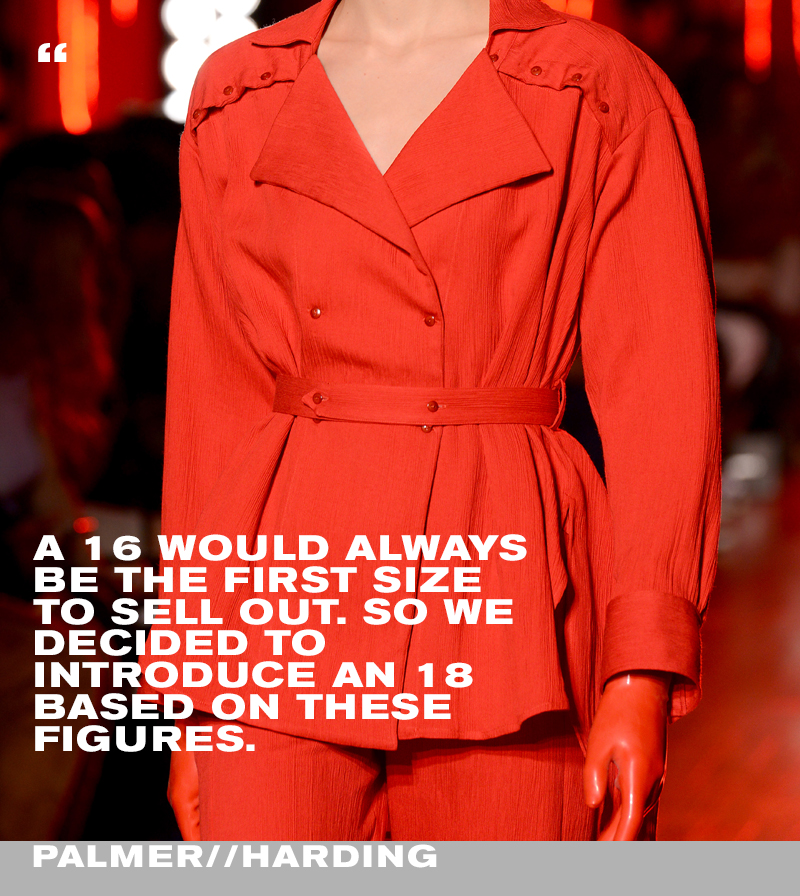
Levi Palmer and Matthew Harding, designers of Palmer//Harding: "We've always done loose styles in a size 6 to 16 and noticed that we had many women larger than a 16 who were able to fit in the looser styles and were buying them. So 16 would always be the first size to sell out for us; we decided to introduce an 18 based on these figures."
"We also have always spoken about inclusivity in our brand and wanted to make sure that that message correlated in our sizing. It is in our plans to try to increase a size each year, but as a small brand, we need to do it slowly and correctly, because grading sizes isn't just as easy as adding a bit of extra fabric to the width of a pattern."
"We want to make samples and try them on fit models in larger sizes to be sure the proportions work for those sizes as well. Design-wise, it's not too difficult to expand your sizes as long as you stay away from ultra-waisted designs, which isn't in our brand DNA anyway. As far as logistical challenges, everyone carries weight differently, so this can be challenging to decide on how your size 18 will fit; what works for one size 18 body doesn't necessarily work for another. I'd like to see more variety in sizing in fashion media—not just a plus-sized 16 and up."
"It would be good to see a variety of all sizes in-between to show that there's beauty in all sizes. Additionally, it would be good to see more retailers buying into larger sizes and doing marketing activity to inform their untapped customer base about their inclusive offering."
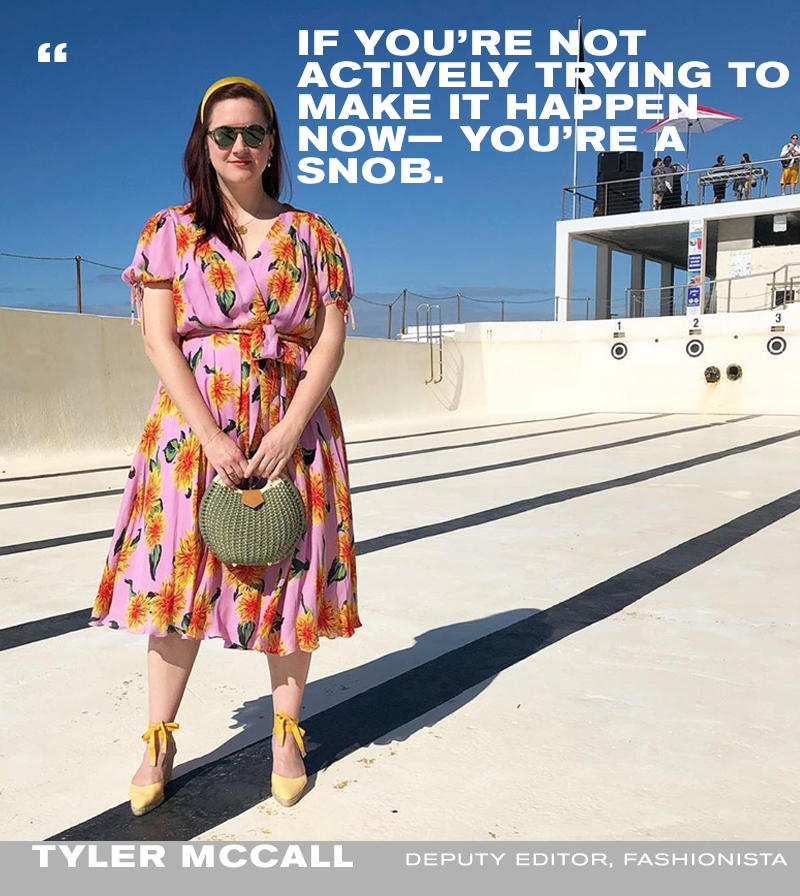
Tyler McCall, deputy editor of Fashionista.com: "Since I wrote an essay about the lack of diversity in street style last February (and Lindsay Peoples wrote a great follow up for The Cut), I've seen an uptick in improvement for sure."
"I think some of it was just a question of photographers not realising their own biases. I do agree with some of the photographers that there's generally a lack of diversity in attendance at the shows, especially in some European cities. Fashion is an industry that tends to reward thin, cis white women across all sectors, which means a lot of people who work in fashion fit that bill. That being said, it's not like there aren't bigger-bodied women out there! It's a question of shaking things up and looking for people who aren't the now-standard for street style."
"I think there's really great work being done with inclusive sizing from newer, more independent brands, but it really frustrates me that there's no progress from the big luxury brands. If anyone has the resources to dedicate to expanding sizing options, it's these companies. They already produce small amounts of their ready-to-wear lines anyway, so they aren't risking producing a size run in bulk and losing a lot of money.
"I know that it's a highly aspirational level of fashion, but women want to see themselves represented there too, and it would be nice to be able to splurge once in a while. It's to the point where it feels like snobbery is the only reason why brands don't expand sizing these days. There's a lot of excuses out there, but when it comes down to it, if you want to make it happen, there are ways to do it."
"I'm a bit biased, but I love the work 11 Honoré is doing in this space. It's also super frustrating that a lot of the more mass retailers or contemporary brands aren't doing better either, for similar reasons. I can't shop at a lot of labels fashion editors love because they don't go beyond a UK 14 or a 16. Julee Wilson once said that if a brand or designer doesn't extend sizes, they must not like money, and I really love that as a response."
"With all the conversation around extended sizing and inclusivity, if you're not actively trying to make it happen now, you just like losing out on an entire market share and also, you're a snob."
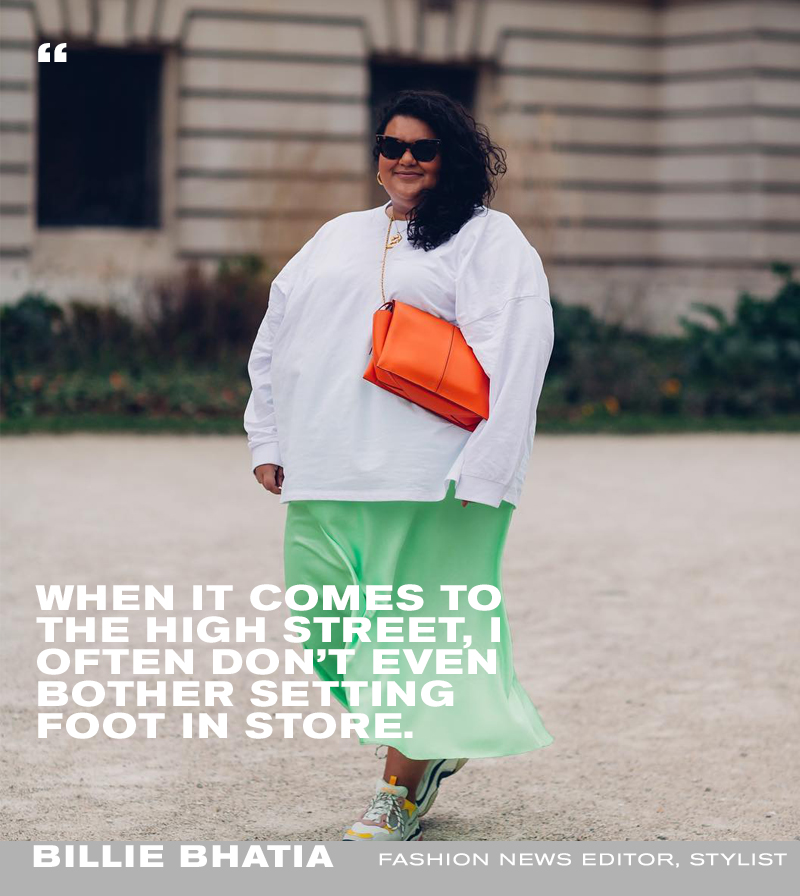
Billie Bhatia, fashion news editor and stylist: "As a rule of thumb, there's still a huge sizing problem in the fashion industry. I'm forever searching for the oversized version of what I want in hopes that I too can sport a gingham tea dress and puff-sleeved blouse. There are so many exciting contemporary brands on the market that are designing brilliant pieces for the modern woman, but the biggest size they're offering is a 16 (which is really a 14), and it's really disappointing.
"There's a huge gap in the market for directional clothing for women of all sizes. Really, who doesn’t want to feel like they look cool? Of course, there are dedicated curve brands, but often I find the offering falls flat when it comes to stylish pieces. ASOS Curve is by far the market leader in delivering a vast collection in a whole host of sizes. But the rest of the curve market feels a lot like jersey basics."
"When it comes to high street, often I don't even bother setting foot in store. Zara is basically a complete write-off, which is such a shame because they have so many great pieces I would love to wear, but even my friends who are a size 12 often struggle to fit into their XL sizes.
"The best way to make more size-inclusive pieces isn't to make a separate curve or plus-sized collection but just to extend the sizes of mainline pieces, and that should be across the board of high-street and mid-market and designer brands. After all, there are billions of pounds these brands are missing out on."
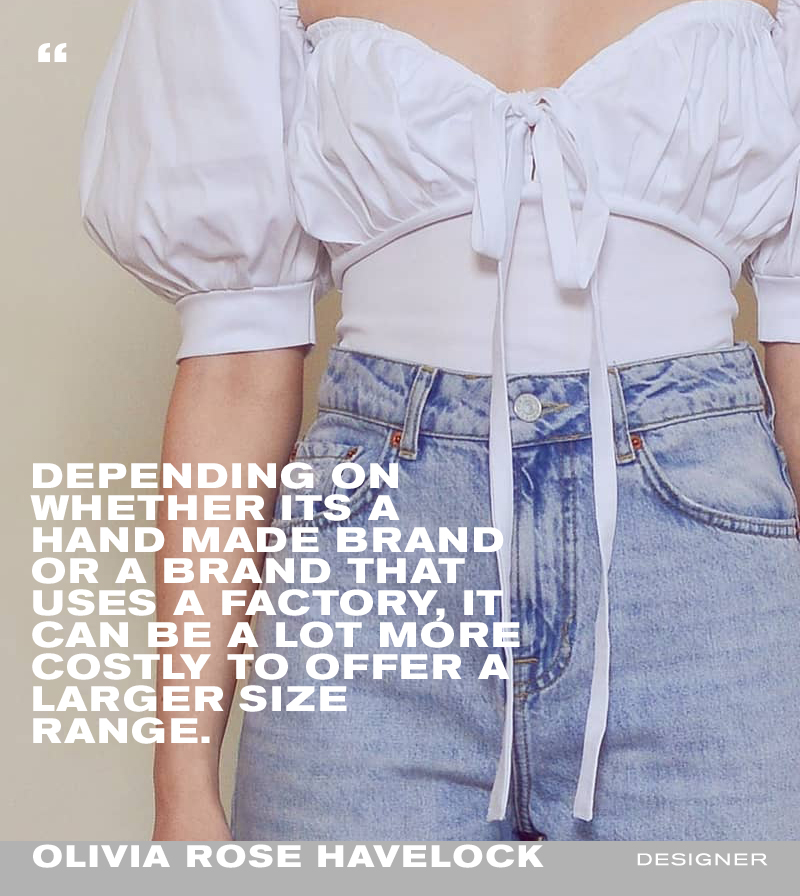
Olivia Rose Havelock, founder of Olivia Rose the Label: "I think that changes are definitely being made now in regards to size inclusivity, and I'm sure more brands will follow suit in the near future. I design for literally any size—from the smallest to the largest, as you can add your own custom measurements at no extra cost to all the items on my website when purchasing."
"I just don't see why anyone should have to miss out on buying an item. I want to be able to offer anyone and everyone a chance to own a piece of my clothing. As I hand-make everything to order, I'm lucky in that I can offer a custom service to all my customers—whether they're larger, smaller, petite or tall. I can do pretty much whatever they ask. I have all the patterns of my designs that I make myself from scratch in a range of standard sizes, and I then use these as a guideline for any custom measurements that have been given to me."
"It's definitely a lot more time-consuming, as I'm essentially taking more time out to create a new garment from the unique measurements, but again, I run the whole brand myself, as well as make everything myself, so I'm able to offer this right now. It takes so much longer than people will think and is more expensive. Depending on whether it's a handmade brand or a brand that uses a factory, it can be a lot more costly to create and offer a larger size range. There's a lot that goes into being able to make it happen that people probably don't realise."
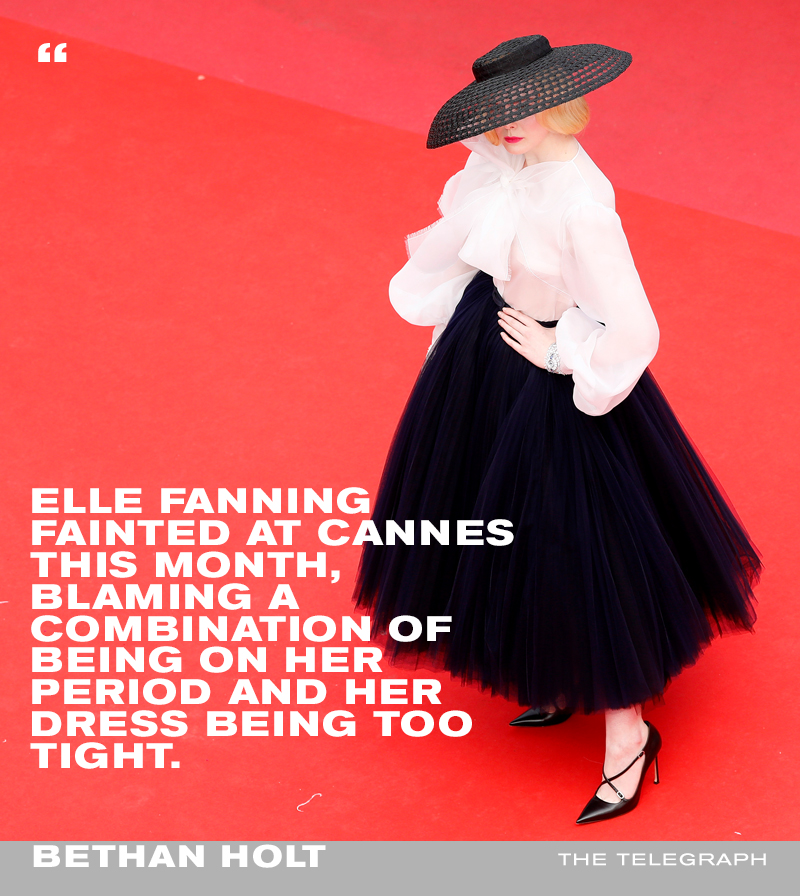
Bethan Holt, fashion news and features director at The Telegraph: "This week, I found a great brand on Matchesfashion.com that we really wanted to feature in Stella, but when we checked the stock levels, we found it only went up to a size 12. Most of all, that left me confused. Why wouldn't you want to see your clothes to be available to as many women as possible? Firstly, because you'd make more money. But the sad truth is that many labels don't want bigger women wearing their clothes."
"I really admire designers like Christian Siriano, who embraces women of all shapes and makes them feel good, whereas other brands would not. Some designers are coming around to the idea—Dolce and Gabbana is increasing the breadth of sizes it offers. I saw that Elle Fanning fainted at Cannes this month, blaming it on a combination of being on her period and her dress being too tight. It's such a shame that designers can't create samples that are more realistic to accommodate something more than teeny model figures."
"The simple, technical excuse of not having much fabric to make samples has perpetuated this awful situation of women feeling inadequate about themselves and models having to diet to fit into the clothes they're expected to wear. There must be another way."
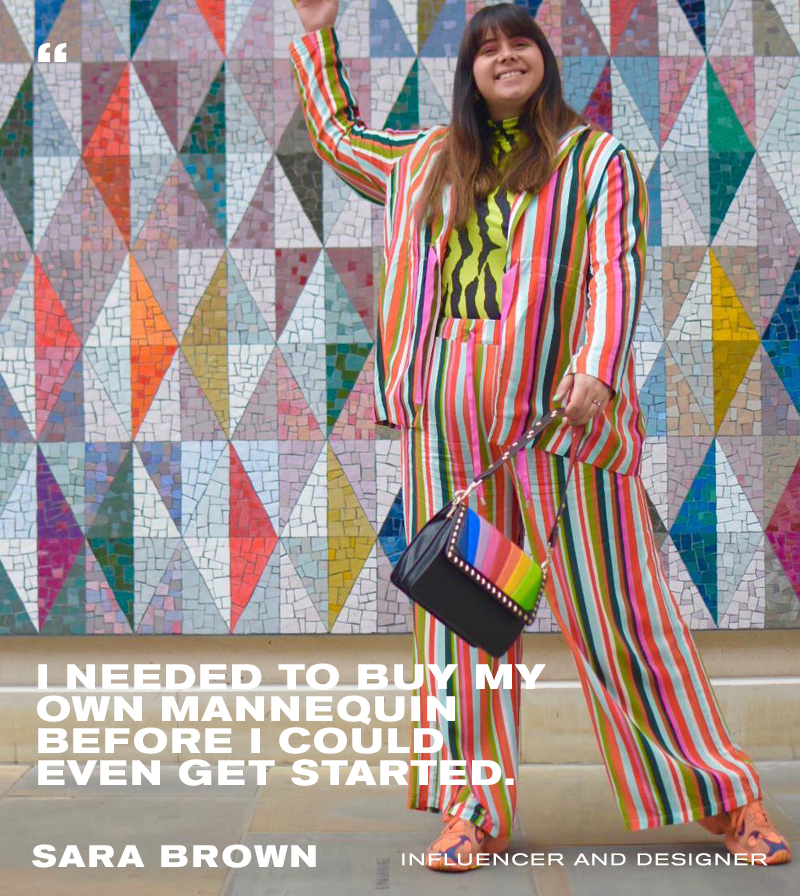
Sara Brown, influencer and designer at ASOS: "I have always been 'bigger.' Luckily, I grew up as a size 16, so I could just fit into most high-street brands, but even at that, I feel like I've never fit into a pair of Zara trousers. There was never the option to size up or to buy something oversized if I would prefer that fit. That's why now, at a size 22, I'm so overjoyed to find brands where the size range means I can buy a size 28 in a jacket if I want to style it oversized."
"I work as a designer at ASOS and studied fashion for over five years. All the way through my education, I went against the norm of making sample size 10 pieces, and I made my work so it could fit me. I believed there was no point in designing something if I couldn't have the opportunity to wear it myself. Even during the educational stage in a designer's career, it is made increasingly difficult to make clothes for bigger girls. I needed to buy my own mannequin and grade up all the dress pattern blocks myself before I could even get started."
"This added level of effort required has continued into the industry. It takes more money, more time and more risk to expand size ranges past the size 6 to-16 norm. Although it's a horrible truth to learn, I understand why brands would struggle to provide all their products up to a size 32 or beyond. It must be especially hard for smaller startup brands; the risk might just be too much for the dying brands of our high street."
"After removing my empathy for these brands, I still stand annoyed. I'm frustrated that finding trend items in my size is near impossible. I'm really fed up with being told that fat people would prefer to wear the toned-down version, that they'd prefer the key season's piece that everyone else is wearing in fluorescent yellow in beige."
"Where we see brands that thankfully offer a plus-sized range—why is it that the range is usually made up of 'basics' for your 'staple wardrobe'? I don't want that—I want the all-singing-all-dancing party piece, the piece everyone is wearing, the piece that would get featured onBest Knockoff Luxury Clothing . I basically want to be included in the hype that's happening. If everyone is wearing this gorgeous dress from Zara, I want the option to join that gang."
"ASOS's Curve range has been killing it for years, but I'm ever grateful for the efforts they're putting into helping smaller brands expand their sizes. I love Neon Rose Plus and New Girl Order Curve for bringing trendier items to the plus-sized arena. If I'm looking for quality, I'll head to Navabi, where you can find quality and considered fit. I'm a big fan of M&S's trend pieces and am thrilled that they go up to a size 24."
"I'm so excited by the progress, but there's still a massive gap in the market that I hope brands keep reacting to. I'm so happy to be a part of this movement making fashion size-inclusive; I want rid of the idea that a fat girl cannot be chic."
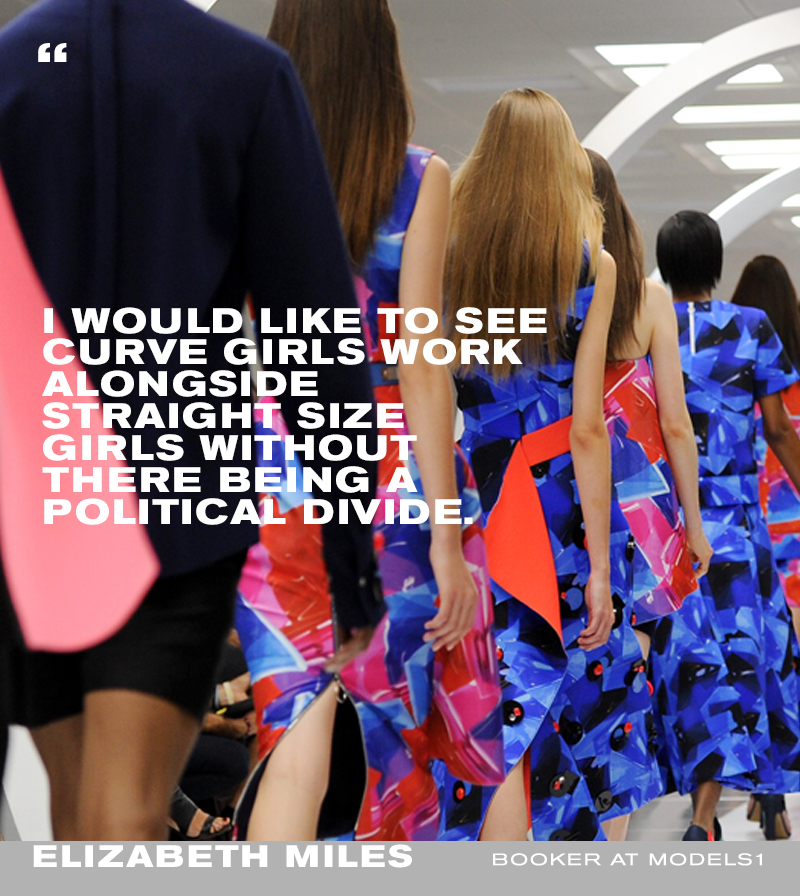
Elizabeth Miles, model booker at Models1: "I want to see the stigma and negative connotations that the term 'plus sized' is associated with dropped entirely. We've definitely come on leaps and bounds in the last couple of years, in terms of diversity. Essentially, I'd like to see my curve girls work alongside straight-size girls without it being made such a big deal or there being too much of a political divide."
"I started model booking over three years ago, and the significant shift I've within the 'curve' world is pretty incredible. One of our top girls, Emma Breschi, was the first-ever curve model to shoot a campaign for Vivienne Westwood, which I think is a pretty impressive accolade. Overall, the industry has become much more inclusive, which is so positive and empowering."
"It's becoming much more of a norm now to receive work for curve models. When we receive briefs from clients, 99% of the time, they're requesting a curve model as well as a new face, main-board girl and a male model. Editorial clients such as Vogue and Harper's Bazaar are more open to using girls of different shapes now, whereas before, there was much more commercial work on offer than editorial. We represent girls from a dress size 12 to an 18, and the girls are all very different shapes."
"So it can be a little more involved when sending packages. Certain clients have specific requirements in terms of dress sizes that work best for them and their online demographic when it comes to sales. So typically, when I receive a brief—unlike the other boards who have to fit the brief in terms of aesthetic, hair colour and eye colour, etc.—I always have to consider the girl's shape and dress size."
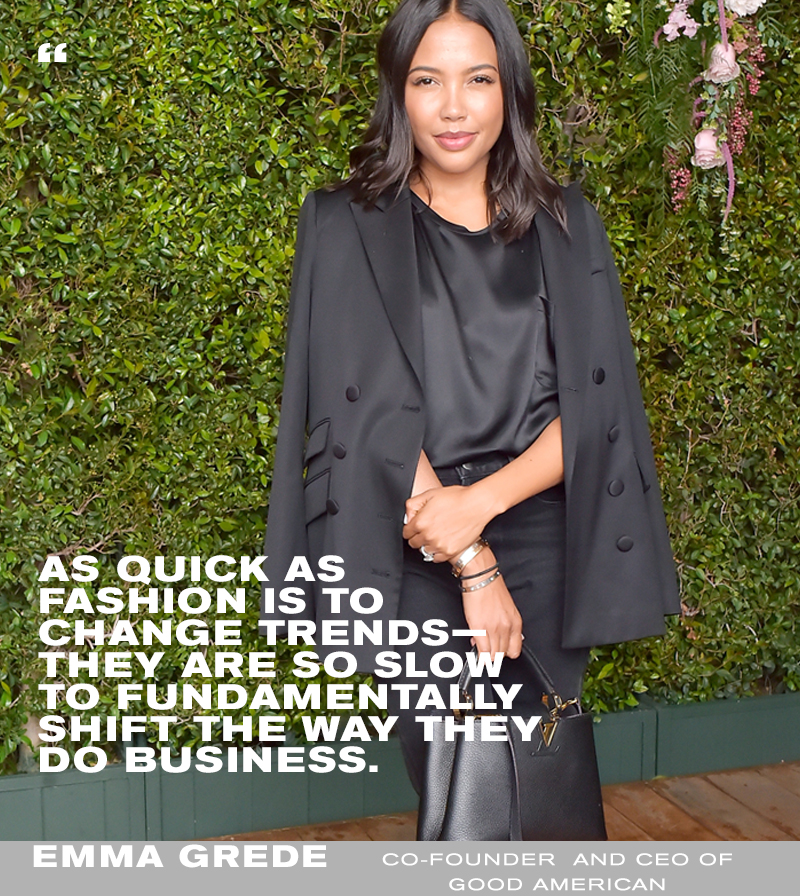
Emma Grede, co-founder and CEO of Good American: "My invention at Good American is a size 15 [ed. note—in American sizes]. It was something that came from pure data, and when you have a company like ours—which is 70% direct-to-consumer—you have all of this amazing data make decisions from.
"We were getting so many returns around a size 16, and from that came an amazing piece of insight that we were missing a size. The interesting thing with 'regular sizing' and 'plus sizes' is that there's a pattern jump in between, so some of our garments have two patterns and three patterns. But if you look at the two in the paper form, they're completely different.
"The plus-sized pattern has curves in the hip, calf and thigh. When you look at size grading, it jumps between sizes, so when you go between a 2 and a 4, a 4 and a 6 and a 6 and an 8, there are inches between them. But when you go between a 16 and an 18, 18 20 and 22 24, there are more inches between, so in the middle, there's a massive jump. Not only do the inches jump, but you're also dealing with the curvature. You're doing this huge size jump."
"There's no universal sizing standard—some brands start plus sizes at 14, some at 16, some even later at an 18. For us, it was about understanding when our pattern grading changed and where the biggest jumps in the measurements were. When you look at it on paper you go, 'Oh, that's really simple,' so you just insert a size in the middle. You're one size in Topshop and a totally different size in Saint Laurent. Everyone is basically making it up."
"For us, adding in this size captured this whole new customer. There are a lot of women who sit between missy (this is the name for 'straight' sizes) and plus sizes, so it was an extension of what's in our regular straight pattern and adding an extra size on. I reckon there are 20 million women in America who are that size. We sold two-and-a-half-thousand pairs on the first day."
"I've spent the past two years looking at why everyone has a different size grade. You definitely find in higher-end fashion, things tend to be graded smaller, and things tend to be more democratic the lower down the fashion chain you go. I don't think there's a need for people to have a universal sizing standard, but I think there's a need to have more sizes.
"There's a need for people to wake up and service a customer that's there. As quick as fashion is to change trends, they're so slow to fundamentally shift the way they do business. The success of Good American should be a lesson to everyone."
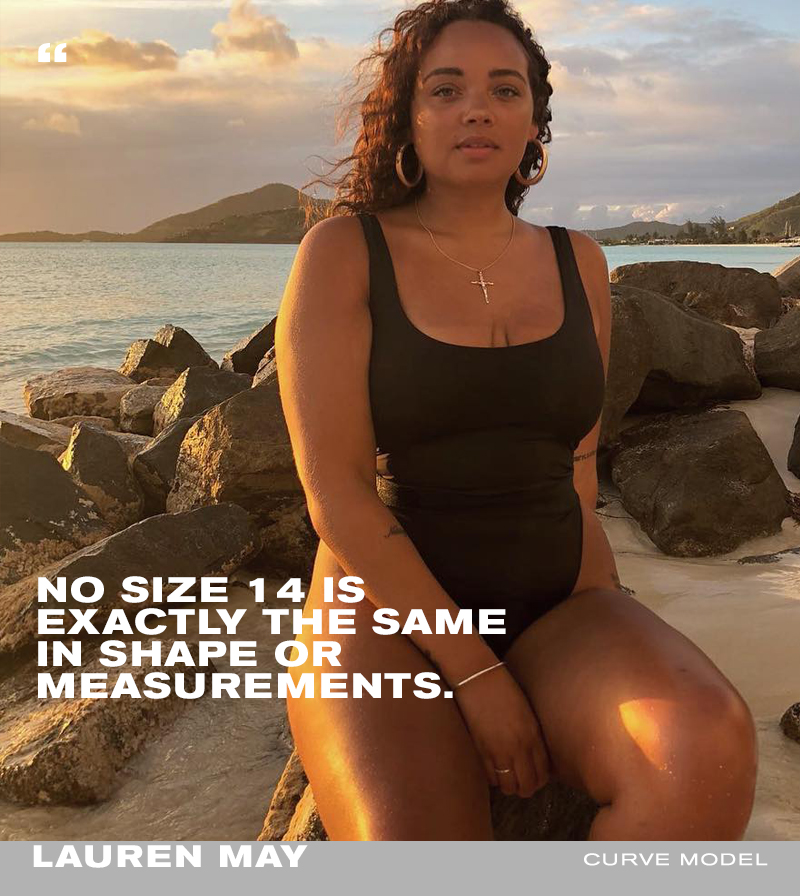
Lauren May, curve model: "I'd love to see more 'in-between' sizing available to women, as we're all proportioned so differently. No size 14, for example, is exactly the same in shape or measurements. I feel as though sizing with brands is not individual or realistic. I can wear a 12, 14 or 16, depending on the brand or type of clothing, which is crazy. Sizing can also make you more conscious of your body if your sizes fluctuate so much between brands.
"I feel that curve models are being used a lot more in the media (there has been a massive influx of curve models and bloggers, compared to a few years ago when curve modelling was more of a niche market), but there's still a long way to go. There has been a positive change, but also, a curve model is now more of an 'add-on' to normalise brands and make them appear more inclusive, or they'll be represented by brands that purely market towards plus-sized women."
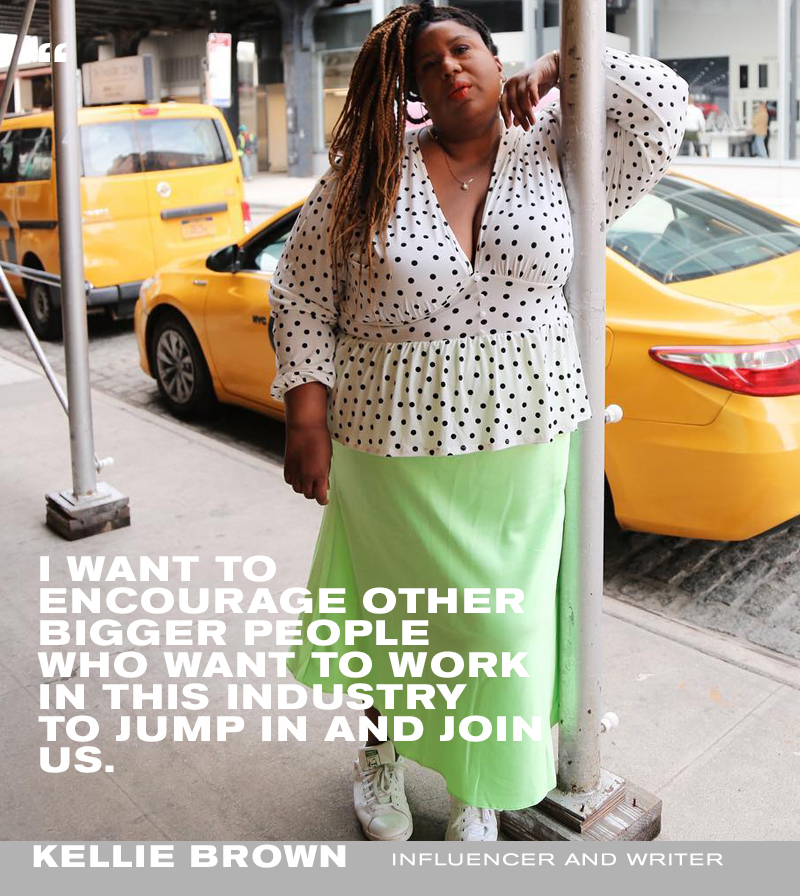
Kellie Brown, influencer, writer and the creator of the #FatAtFashionWeek hashtag: "I'd love for inclusive sizing to be the norm rather than brands selling clothes beyond a size 16 feeling like a unicorn. When brands do expand into plus sizes, it's often only adding two to four additional sizes and feels like a press play for 'inclusivity.' I decided to create the #FatAtFashionWeek hashtag because women of all shapes and sizes are contributing to this industry in major ways beyond the runway.
"The conversation around inclusivity at fashion week centres around using larger models, but beyond that, plus-sized women are editors, writers, stylists, makeup artists, marketing managers, PRs, cast agents and more. I want to encourage other bigger people who want to work in this industry to jump in and join us. The reaction has been incredible—I love seeing the hashtag used at fashion weeks around the world!"
Next up, see our guide to the key trends for spring/summer 2019.
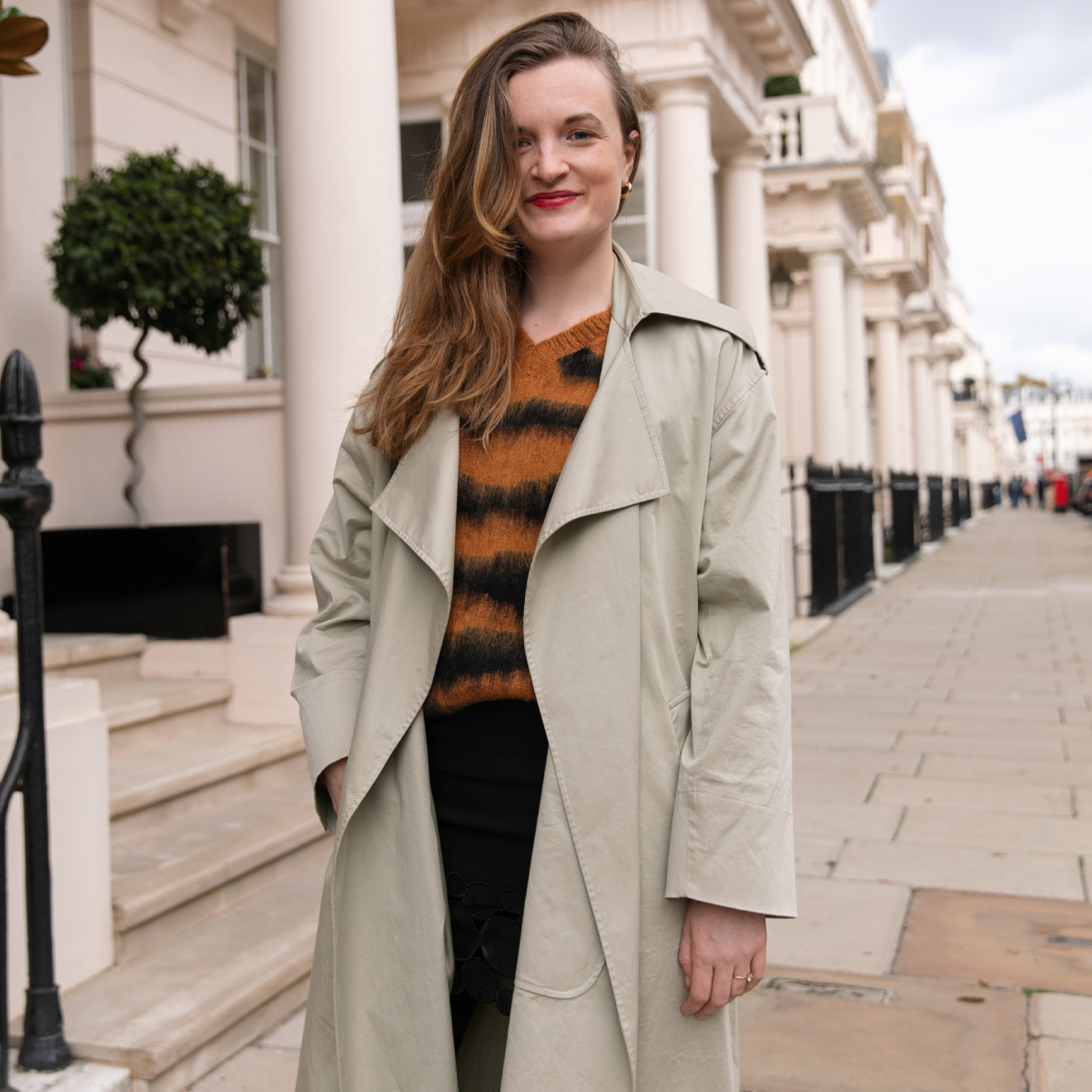
Emma is a freelance fashion editor with over 15 years experience in industry, having worked at The Telegraph, Grazia and, most recently, British Vogue. Emma was part of the founding team of Who What Wear UK, where she worked for six years as Deputy Editor and then Editor—helping shape the team into what it is today is one of the biggest privileges of her career and she will always see herself as aBest Knockoff Luxury Clothing girl, contributing to both the US and UK sites. Whether she's writing about runway trends or spotlighting emerging brands, she aims to write about fashion in a way that is democratic and doesn't promote over consumption.